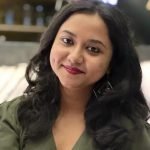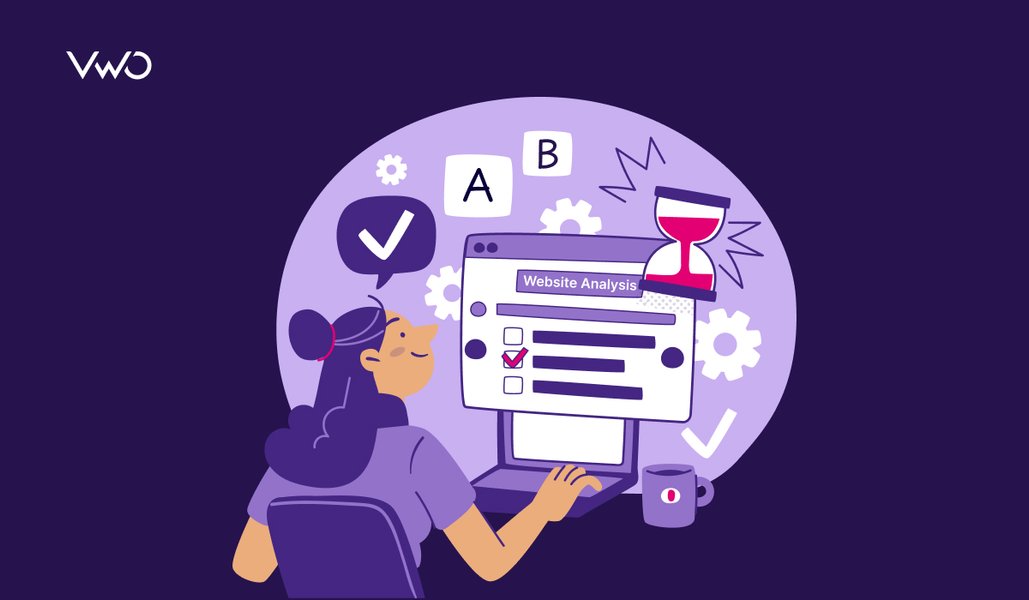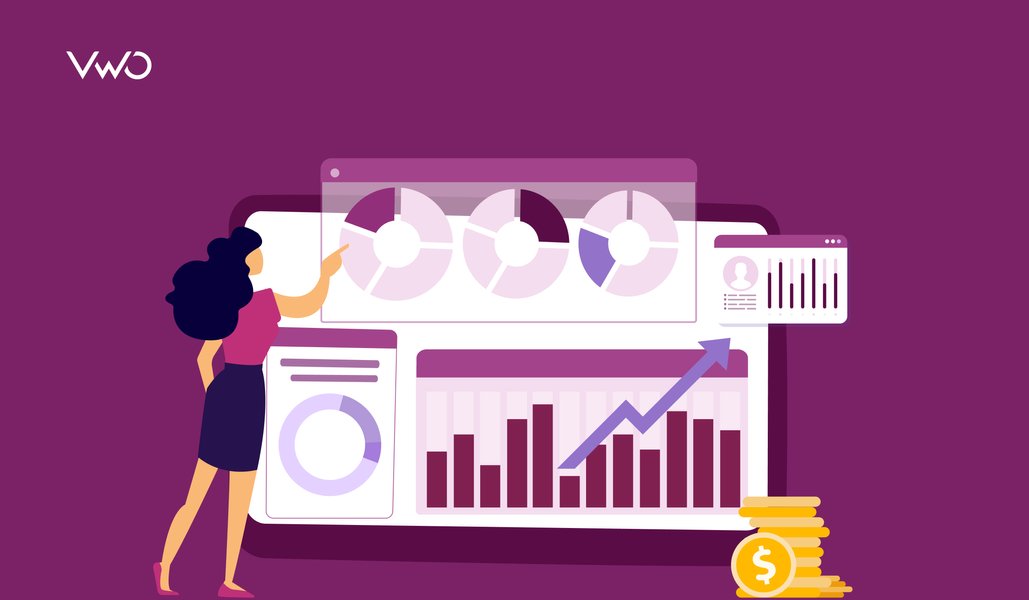Do you know what makes successful companies what they are?
No, they don’t wave a magic wand to score successes.
Among the strategies they employ, a common thread is placing customers at the core of everything they do. It all begins with tuning in and understanding how audiences navigate their websites and engage with their brands. And this naturally leads them to leverage behavioral analytics.
While anyone in an organization can explore visitor behavior, certain professionals absolutely need to delve into it because their work is rooted in deriving valuable insights from such analyses. And when they become pals with behavior analytics tools, they can do justice to the work they do.
Product managers convert insights from visitor behavior into actionable steps for the development team to create features that visitors love.
Next, we have the marketers who identify conversion roadblocks and optimize them to maximize the return on marketing investments through behavior analysis.
Lastly, UX professionals leverage behavior analytics to craft intuitive, frictionless website journeys, addressing visitors’ pain points and needs.
Their use cases may vary, but they recognize the value of analyzing visitor behavior for their company’s success.
Continue reading to know in detail how each of these personas can benefit from using behavior analytics.

How Product Managers benefit from behavior analytics
Product managers are responsible for recognizing customer needs and improving the product, either by enhancing existing features or introducing new ones. It’s not just about meeting customer needs; they also make sure these improvements help achieve the overall goals of the business.
They act as a link between customers and the development team, turning feedback into practical plans. This entire exercise requires a solid understanding of how visitors behave on their websites – indicating a lot about their needs, expectations, pain points, and aspirations.
Prioritize features that users want
Wondering if your product has peaked and reached its best version? Well, that might not be the case. Visitor needs are ever-evolving, and it’s essential to stay tuned to their preferences. Some innovative ideas arise from their needs, ones you might not have considered. In such cases, using behavior analytics tools like surveys allows you to directly understand what they’re looking for.
But it’s not always a straightforward conversation. Sometimes, you have to observe their actions, pick up on subtle cues, and figure out how to enhance their website journey without them explicitly stating it. This is where tools like heatmaps and session recordings prove invaluable.
Hot red colors on heatmaps indicate high engagement, while cool blue colors show low engagement. On the other hand, session recordings offer a comprehensive view of visitors in action—revealing where they pause, what they click, and more. This way, these tools help uncover the challenges visitors face, providing product managers with opportunities to create new features that align with evolving needs.
Increase feature adoption
Introducing cool features is fantastic, but the real magic happens when our visitors actively engage with them, doesn’t it? Now, how do we gauge their usage? Heatmaps and recordings step in to showcase how smoothly audiences interact with the new features.
Let’s say you’re a product manager at a gaming company, and you want to see the audience’s reaction to a new feature showing interactive gaming tutorials and walkthroughs. By tuning into insights from visitor behavior, as unveiled by these tools, you can effectively assess how players are responding to the feature.
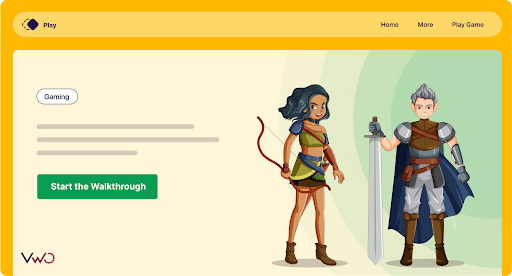
Are the heatmaps indicating less engagement in this area? Do recordings reveal that not many visitors are interacting with these tutorials? Delving deep into their behavior will help you determine at what stage of engagement the visitors are with your new product feature. This allows you to refine visitor experiences, encouraging them to embrace the feature with ease.
Expedite bug fixes
Imagine you have a website selling various products, and customers often encounter broken links when trying out a new feature, such as viewing a product in a 3D setting on the product page. That’s a bug, and they happen in software. But the quicker these bugs are fixed, the happier users are. Swift bug resolution is essential for maintaining a seamless user experience.

Behavioral analytics tools, such as session recordings and surveys, offer a proactive approach to bug detection and resolution. Suppose, when you observe in a recording that visitors are clicking the link and it shows as broken, it indicates a friction in their journey. This way, you know where the problem is, and you can take quick action. By leveraging these tools, product managers can promptly identify and prioritize fixing critical bugs, ensuring a more stable and reliable product for users.
Decrease support tickets
While efficient customer support is crucial, we should ensure that our product is so finely tuned from the get-go that our visitors face little to no problems to begin with. Consider a travel booking website where users occasionally encounter hiccups in the flight search process, leading to a surge in support tickets.
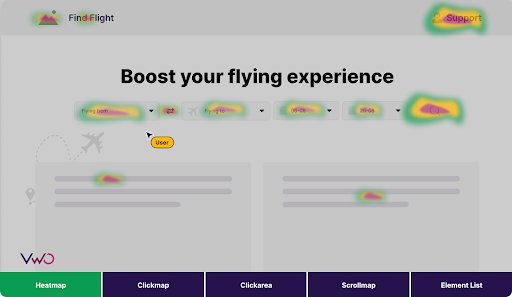
Now, through heatmaps and surveys, the product manager gains a sneak peek into visitors’ sentiments and pain points during the booking journey. This way, they can proactively tackle specific challenges, like fine-tuning the search filters. This not only elevates the booking experience but also naturally reduces the number of support tickets, ensuring a smoother journey for visitors planning their trips right from the start.
A product manager’s strategy is rooted in creating a product that is intuitively designed, motivating visitors to make the most of the new features. Incorporating intuitive guides and tooltips within the product can preemptively assist visitors, reducing the likelihood of queries and support ticket submissions.
How Marketers benefit from behavior analytics
In today’s era where data fuels business growth, marketers zero in on a data-driven approach for sustained business growth. Hence, by investigating visitor behavior on websites, they uncover optimization opportunities and implement effective strategies. In doing so, they ensure maximum conversions from website traffic, contributing to businesses’ returns on marketing investments.
Reverse low conversions
The role of a CRO marketer is to decipher why website visitors may slip through the cracks without completing desired actions. Are there any friction points hindering them from following the expected conversion route? Heatmaps and session recordings shed light on visitor behavior, unveiling areas causing confusion or disinterest. By addressing these pain points, you can effectively reverse the trend of low conversions.
Let’s consider a scenario where your heatmap reveals a lack of engagement with the primary CTA button on your website. After adjusting its placement and design based on insights from session recordings, you’ll likely observe an increase in conversions.
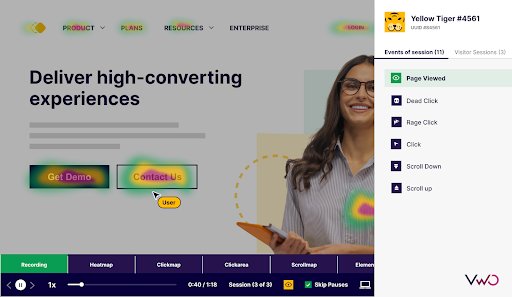
Note: Qualitative research reveals the ‘why’ behind visitor behavior, explaining why visitors act a certain way on a website. However, before delving into qualitative insights, quantitative research provides the ‘what’ – identifying specific issues on the website.
Once quantitative research uncovers problems like drop-offs and declining average page sessions, qualitative research comes into play to understand why visitors exhibit certain behaviors causing these issues. In all these scenarios, personas either proactively dive into behavior analytics to stay ahead of visitor behavior or turn to qualitative research after identifying problems in quantitative research (using tools like Google Analytics 4) for in-depth analyses.
Discover engagement gaps
Websites serve as intricate canvases, capturing the ebb and flow of visitor interactions. Ever noticed those quiet corners or pages where visitor engagement seems to dim? CRO marketers pinpoint and revive these areas of potential disengagement.
How’s that possible? By turning to behavioral analytics. Heatmaps highlight areas with low and high engagement, offering a detailed map of user activity. Meanwhile, session recordings delve into the subtle nuances of visitor disengagement, providing a playback of their journey on the website. Armed with this insightful palette, you can strategically enhance specific sections, improving the overall experience.
Consider a scenario where a clickmap signals low interaction with a crucial product description. By delving into the related session recordings, you hypothesize that bringing it above the fold could enhance visitor engagement, offering them maximum information for their purchase decision. Strategic adjustments like these demonstrate how marketers can effectively leverage insights to bridge engagement gaps and drive results.

Segment for personalization
Embracing a one-size-fits-all approach can spell disaster for any website’s conversion rates. Instead, you should uncover the unique behaviors within diverse visitor groups and tailor experiences to align with their preferences. To achieve this, employing a behavior analytics tool like VWO becomes essential—it allows you to delve into specific segments for personalizing experiences.
For example, simply choose the segment you want to see the session recording for and create a targeted view of a specific page. Additionally, with advanced filters, you can gain insights into how various segments engage with forms and on-page surveys on your website. This wealth of information becomes the foundation for building your personalization strategy.

Suppose you apply a filter to form responses and observe that new visitors show the highest drop-off from your services website. You can brainstorm creative solutions such as introducing complementary offers or discounts to incentivize this specific visitor group to complete form submissions. By adapting your approach based on these insights, you tap into the power of personalization for improved conversion outcomes.
Refine messaging
Do you know what’s the best way to strike a chord with your website visitors? Talk the language your visitors really want to hear. It’s all about paying attention to how visitors behave on your website and tweaking your messages accordingly.
And you can probably guess what helps you in this case? Yes, behavior analytics. Let’s say you have a real estate website, and you see on GA4 that visitors from urban areas are spending more time on modern condo listings than suburban homes. When asked through surveys what exactly they are looking for, you get to know visitors want to see more benefits of booking condos on your website.
You can refine your messages on those condo pages, highlighting the verified sellers, affordable pricing, and perhaps emphasizing the nearby trendy spots. It’s like customizing your property listings based on what urban dwellers are truly seeking. Hence, behavior analytics empowers you to craft messages that resonate with potential buyers.
Watch our webinar to discover how to write copies that solve visitors’ pain points and improve conversions.
How UX Professionals benefit from behavior analytics
UX professionals play a crucial role in shaping how visitors experience a website. Starting with UX researchers, their responsibility is to deeply understand the needs, behaviors, and preferences of visitors. With these insights, UX designers create user-centric interfaces that are intuitive, visually appealing, and aligned with user needs.
Throughout this journey, behavioral analytics serves as a valuable companion, supporting them every step of the way. This data-driven research and design approach ensures that decisions are well-informed, making the overall visitor experience effective.
Uncover navigation bottlenecks
A visitor-friendly navigation structure isn’t just a fancy improvement. It can boost product or information findability by 72%. This is supposed to have a positive impact on the overall visitor experience. The key lies in employing behavior analytics tools to keep a close eye on how visitors interact with your website.
For example, imagine discovering through clickmaps that visitors are frequently clicking on a non-clickable element, clearly indicated by a conspicuous red color on your website. Concurrently, session recordings show instances of rage clicks followed by a subsequent drop-off. Based on these insights, your UX team can proactively address the challenge, delving into strategies to enhance navigation and ensure a smoother user journey on your website.
Expedite research with visual data
Trends are fleeting, and visitor preferences evolve rapidly. Therefore, the ability to promptly make well-informed decisions that align with current audience desires is crucial.
Behavior analytics provides an immediate and comprehensive overview of visitors interactions on your platform, accelerating your research and design executions. For instance, imagine you manage a learning platform and observe through visual insights from heatmaps and session recordings that students tend to skip lengthy lecture recordings.
To delve into the reasons behind this behavior, you initiate quick and focused surveys, efficiently collecting user opinions. The feedback indicates a desire for quizzes and community discussions in addition to traditional lectures, revealing the pulse of your visitors’ preferences.
Make targeted improvements
Understanding the unique needs of diverse user segments is crucial for tailored improvements. Behavioral analytics tools allow us to investigate and enhance the experience for specific visitor groups.
Let’s say your UX team notices through qualitative research that mobile visitors often struggle with the checkout process on your eCommerce site. So, armed with these insights, your UX team optimizes the checkout flow, making it simpler for this segment to complete the purchase, ultimately enhancing their overall shopping experience.
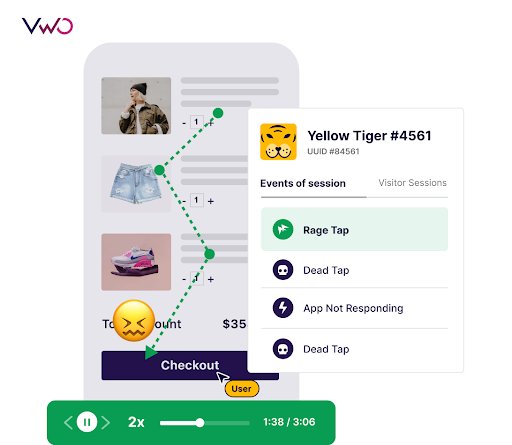
Sounds like a hassle? If you’re thinking of skipping, remember the fact that personalization helps companies get 40% more revenue than those that don’t. This should motivate you to have your UX teams trained on behavior analytics if you have not already.
Validate designs with user feedback
When a UI matches a visitor’s mental model, it feels intuitive and reduces the cognitive load on visitors. It aligns with their expectations, making it easier for them to navigate and interact with the interface seamlessly.
That’s why validating your UI with visitor feedback tells you that you are on the right track. Behavior analytics, like heatmaps and session recordings, play a critical role in understanding how users interact with the UI.
Consider a scenario where a UX team is working on the mobile version of a banking website. An increase in premature drop-offs as shown in Google Analytics tells you to identify potential friction points. Session recordings reveal users struggling to find the transaction history. Surveys further confirm that users expect the transaction history to be more prominently placed on the home screen. Subsequently, the UX team redesigned the layout to align with users’ mental models, resulting in a more intuitive and user-friendly interface.

If you’re eager to contribute to your company’s growth through visitor research, our blog will guide you on how you can make a meaningful impact within your role. We’ve discussed examples to justify the perks of behavioral analytics – and guess what? It works in almost every industry!
Just make sure to follow best practices, starting with quantitative research to identify problem areas. Then, move to qualitative analysis, document your learnings, and set the right goals you want to achieve based on the insights gained from visitor behavior.
So, let’s say you have hands-on visitor insights, but you’re unsure whether you need them to reverse conversions or bridge engagement. In such cases, it might make little sense, and you could inadvertently encroach into another persona’s work territory
VWO Insights – Web: The go-to behavior analytics tool for businesses
VWO Insights – Web has always been at the forefront of visitor behavior analytics, providing businesses with profound insights into their websites. Recently, its power has doubled with the launch of the Insights dashboard, bringing your website’s overall engagement performance report to your fingertips. Now, you can view page-level heatmaps, session recordings, segments with the lowest user experience, and more.
And you know what else? We’ve integrated AI into surveys that generate questions for your surveys until you’re satisfied with the output. You also receive summarized survey responses with key insights, actionable for easy implementation of optimization ideas. To witness all these features in action, try a free trial with VWO. So, get ready to experience its magic and unveil more visitor insights than you could ever imagine.


